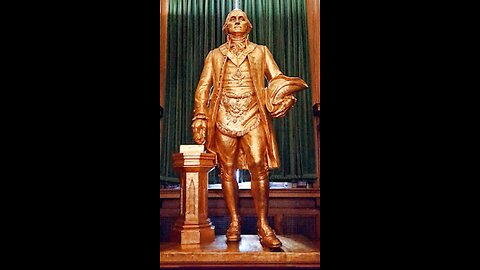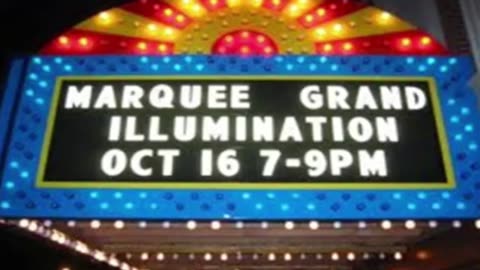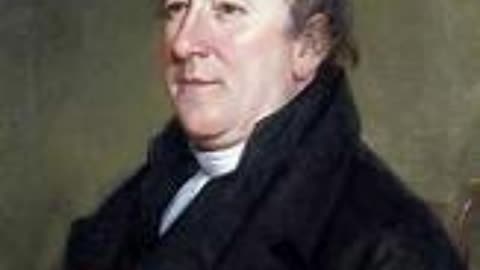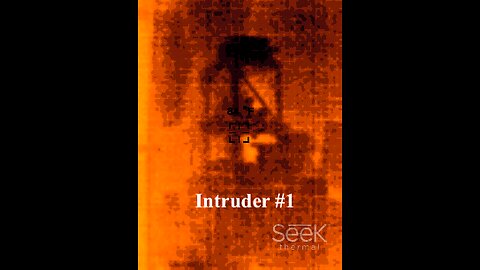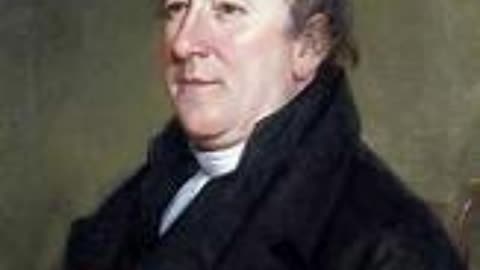Premium Only Content
This video is only available to Rumble Premium subscribers. Subscribe to
enjoy exclusive content and ad-free viewing.
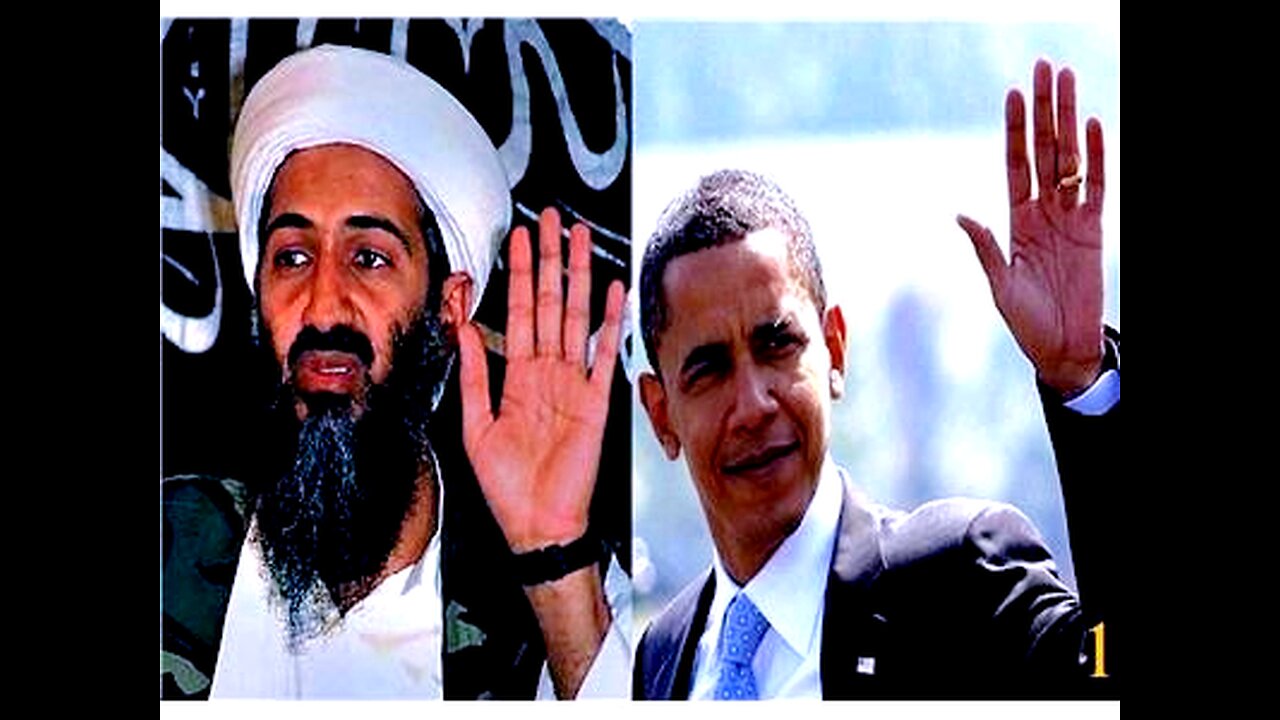
Freemasons Revealed
LegendsMysteryandMore
- 7 / 13
1
I SAW THE SIGN THE VAIL HAS FALLEN
LegendsMysteryandMore
SINDONI SAYS: WHAT WOULD YOU GET IF YOU BURNED ALL 5,000 MASONIC TEMPLES THROUGHOUT THE WORLD DOWN? WORLD PEACE......
You probably knew 23rd Street boasts an eclectic mix of New York City staples, from the Flatiron Building to Shake Shack and of course everyone's favorite source of drywall, the Home Depot. But you probably didn't know West 23rd Street is also home to a secret society known as the Grand Lodge of Free and Accepted Masons of the State of New York. It's not as secretive as it was back in the 1800s during the height of the Freemason days, but this office building-turned-Masonic Temple is a bizarre site and definitely warrants exploration.
2
NYC UNCOVERED FREEMASONS EXPOSED FIRE SOLUTION
LegendsMysteryandMore
SINDONI SAYS: WHAT WOULD YOU GET IF YOU BURNED ALL 5,000 MASONIC TEMPLES THROUGHOUT THE WORLD DOWN? WORLD PEACE......
You probably knew 23rd Street boasts an eclectic mix of New York City staples, from the Flatiron Building to Shake Shack and of course everyone's favorite source of drywall, the Home Depot. But you probably didn't know West 23rd Street is also home to a secret society known as the Grand Lodge of Free and Accepted Masons of the State of New York. It's not as secretive as it was back in the 1800s during the height of the Freemason days, but this office building-turned-Masonic Temple is a bizarre site and definitely warrants exploration. Take a look.
3
I SAW THE SIGN ILLUMINATI AGENDA REVEALED
LegendsMysteryandMore
SINDONI SAYS: WHAT WOULD YOU GET IF YOU BURNED ALL 5,000 MASONIC TEMPLES THROUGHOUT THE WORLD DOWN? WORLD PEACE.....
4
5
911 INSIDE JOB CLOAKING AND OBAMA IS OSAMA
LegendsMysteryandMore
911 INSIDE JOB CLOAKING AND OBAMA IS OSAMA
1
comment
6
A Coded Narrative?
MYLUNCHBREAK CHANNEL PAGE
The Narrative's from the 1800's are a mess and we are exposing this here. They are covered in coded messages. Hidden clues and massive keys. Patterns that give it all away. Patterns, that show that the history that we are all told may just be written by an A.I. Repeating Names that we all missed for decades, until now. It is all being exposed now. It's time for the world to see what we do in today's Clip.
Thank you all for your support of this channel!
Every Subscriber, every Like, All Comments are huge in helping spread this research to new people every single week. Every Badge Member and every Patreon Member help keep this channel running. I appreciate all of the support and I can't wait for every Saturday to expose even more information to the world. And we are just getting started!
---- TO BECOME A BADGE MEMBER & HELP GROW THIS CHANNEL ----
HERE IS THE LINK: https://www.youtube.com/channel/UC7Za5DiASIbqT8fuhiDBU6Q/join
Join this channel to get access to perks!
TOP EPISODES PLAYLIST:
https://www.youtube.com/playlist?list=PLsFQI9PYz0b27yHR3V7di34AoFxT5NXWc
LINK TO RUMBLE CHANNEL:
Rumble: https://rumble.com/v2q03po-his-story-not-ours-pt-5.html
LINK TO TIKTOK CHANNEL: https://www.tiktok.com/@themylunchbreak
I couldn't be more thankful for all of your support. I am having a lot of fun sharing this information with you all!
I hope you all have a great rest of your day!
LINKS:
BECOME A SPONSOR OF MY LUNCH BREAK:
Shout-Outs For the next Month's Episodes!
Patreon: https://patreon.com/MyLunchBreak
X: https://twitter.com/MYLUNCHBREAK_
LINK TO RUMBLE CHANNEL:
Rumble: https://rumble.com/v2q03po-his-story-not-ours-pt-5.html
We are also on TikTok, Spotify & Instagram
T-shirts: https://my-lunch-break.myspreadshop.com/tartaria+my+lunch+break-A644da062cabffc5328538705?productType=111&sellable=yrpy4VgZADuvGXd0Gj02-111-22&appearance=2
Flat Earth Sun, Moon & Zodiac App:
https://apps.apple.com/us/app/flat-earth-sun-moon-zodiac/id1440996640
This is all in my own opinion. Entertaining as always, and of course, you are free to believe whatever you want. I do not claim to know any of this to be 100% true. It is all based on my personal research and simply sharing what I find with you all.
Thank you for your support. I am having a lot of fun sharing all of this information with you all and seeing this channel and our community grow every single day.
My Lunch Break Disclaimer: The content on My Lunch Break is provided for informational and entertainment purposes only. The views and opinions expressed in the videos are those of the creators and do not necessarily reflect the official policy or position of any organization or institution. I strive to present accurate and well-researched information, but we cannot guarantee the accuracy or completeness of the content. Viewers are encouraged to conduct their own research and exercise critical thinking. Theories discussed on this channel may be speculative, controversial, or unverified. My Lunch Break is not a substitute for professional advice, and I do not provide legal, medical, financial, or any other type of advice. Consult with qualified experts for such matters. Viewers should be aware that information and opinions may change over time, and my content may become outdated. We are not responsible for any consequences resulting from reliance on our content. By using this channel, you agree to the terms and conditions of this disclaimer. We reserve the right to change, modify, or remove content at any time. My Lunch Break disclaims any liability for actions taken based on the information provided on our channel.
63.2K
views
67
comments
I Saw The Sign Secret Societies Revealed
LegendsMysteryandMore
I Saw The Sign Secret Societies Revealed
8
MASONS REVEALED IN MEXICO PAST AND PRESENT
LegendsMysteryandMore
MASONS REVEALED IN MEXICO PAST AND PRESENT
9
MASONS REVEALED IN MEXICO PAST AND PRESENT
LegendsMysteryandMore
MASONS REVEALED IN MEXICO PAST AND PRESENT
Emiliano Zapata has the distinction of being the first of the major figures in the Mexican Revolution to take to the field. In 1910, when Francisco Madero was cheated in a national election, he fled to the United States and called for revolution. In the dry, dusty north his call was answered by opportunistic muleteer Pascual Orozco and bandit Pancho Villa, who put major armies into the field. In the south, Madero’s call was answered by Zapata, who had already been fighting wealthy landowners since 1909.
10
FREEMASONS BEWARE FIRE GAME REVEALED
LegendsMysteryandMore
CLICK LINK TO WATCH VIDEO
https://www.bitchute.com/video/o3rWrx4HHqHE/
What and who are the Freemasons, the Illuminatti, and the New World Order?
11
THE TRUTH REVEALED- THE CHIP TATUM STORY
LegendsMysteryandMore
Stephen Sindoni pays a tribute to former C.I.A. agent Chip Tatum who was killed after coming forward with the startling revelation that 911 was a premeditated terrorist action by a secret group within the American government. Take the first step towards Breaking The Matrix and watch the thought provoking video entitled " THE TRUTH REVEALED- THE CHIP TATUM STORY." Have a pencil and paper handy to write down the instructions.... The 911 truth will be revealed!
Music
12
Rufus King Manor-A Disappointed Freemason
LegendsMysteryandMore
https://rumble.com/v507es0-a-little-season-in-new-york-city.html
He won election to represent New York in the United States Senate in 1789 and remained in office until 1796. That year, he accepted President George Washington's appointment to the position of Minister to Great Britain. Though King aligned with Hamilton's Federalist Party, the Democratic-Republican President Thomas Jefferson retained King's services after Jefferson's victory in the 1800 presidential election. King served as the Federalist vice-presidential candidate in the 1804 and 1808 elections and ran on an unsuccessful ticket with Charles Cotesworth Pinckney of South Carolina. Though most Federalists supported the Democratic-Republican DeWitt Clinton in the 1812 presidential election, King, without the support of his party, won the few votes of the Federalists who were unwilling to support Clinton's candidacy. In 1813, King returned to the Senate and remained in office until 1825.
King, the de facto Federalist nominee for president in 1816, lost in a landslide to James Monroe. The Federalist Party became defunct at the national level after 1816, and King was the last presidential nominee whom the party fielded. Nonetheless, King was able to remain in the Senate until 1825, which made him the last Federalist senator because of a split in the New York Democratic-Republican Party. King then accepted President John Quincy Adams's appointment to serve another term as ambassador to Great Britain, but ill health forced King to retire from public life, and he died in 1827. King had five children who lived to adulthood, and he has had numerous notable descendants.
Early life
King was born on March 24, 1755, in Scarborough, which was then part of Massachusetts but is now in Maine.[1] He was a son of Isabella (Bragdon) and Richard King, a prosperous farmer, merchant, lumberman, and sea captain[1] who had settled at Dunstan Landing in Scarborough, near Portland, Maine, and had made a modest fortune by the time Rufus was born. His financial success aroused the jealousy of his neighbors, and when the unpopular Stamp Act 1765 was imposed, a mob ransacked his house and destroyed most of the furniture. Nobody was punished, and the next year, the mob burned down his barn.[2] John Adams once referred to that moment in discussing limitations of the "mob" for the Constitutional Convention and wrote a letter to his wife, Abigail, in which he described the scene:
I am engaged in a famous Cause: The Cause of King, of Scarborough vs. a Mob, that broke into his House, and rifled his Papers, and terrifyed him, his Wife, Children and Servants in the Night. The Terror, and Distress, the Distraction and Horror of this Family cannot be described by Words or painted upon Canvass. It is enough to move a Statue, to melt an Heart of Stone, to read the Story....[2][3]
Richard King was a Loyalist during the American Revolutionary War, but all his sons became Patriots.[2]
Education and early career
King attended Dummer Academy (now The Governor's Academy) at the age of twelve in South Byfield, Massachusetts.[4] Later, he attended Harvard College, where he graduated in 1777.[5] He began to read law under Theophilus Parsons, but his studies were interrupted in 1778, when King volunteered for militia duty during the American Revolutionary War. Appointed a major, he served as an aide to General John Sullivan[4][6] during the Battle of Rhode Island.[5] After the campaign, King returned to his apprenticeship under Parsons. He was admitted to the bar in 1780 and began a legal practice in Newburyport, Massachusetts.[4][7]
Political career
Constitutional Convention
King was first elected to the Massachusetts General Court in 1783 and returned there yearly until 1785. Massachusetts sent him to the Confederation Congress from 1784 to 1787.[4][8] He was one of the youngest men at the conference.
In 1787, King was sent to the Constitutional Convention, which was held in Philadelphia. Despite his youthful stature, King held a significant position at the convention since "he numbered among the most capable orators." Along with James Madison, "he became a leading figure in the nationalist causes." Furthermore, he attended every session. King's major involvements included serving on the Committee on Postponed Matters and the Committee of Style and Arrangement.[4]
Although when he came to the convention, he was still unconvinced that major changes should be made in the Articles of Confederation, his views underwent a startling transformation over the debates.[4] He worked with Chairman William Samuel Johnson, James Madison, Gouverneur Morris, and Alexander Hamilton on the Committee of Style and Arrangement to prepare a final draft of the U.S. Constitution. King was one of the most prominent delegates namely because of playing "a major role in the laborious crafting of the fundamental governing character."[9] The Constitution was signed on September 17 but needed to be ratified by the states.[9] After signing the Constitution, he returned home. He went to work to get the Constitution ratified and unsuccessfully positioned himself to be named to the U.S. Senate.[9] The ratification passed by the narrow margin of 187–168.[9] With the ratification passed, Massachusetts became the sixth state to ratify the constitution in early February 1788.[9]
King was indirectly responsible for the passing of this ratification because his "learned, informative, and persuasive speeches" convinced a "popular, vain merchant and prince-turned-politicians to abandon his anti-federalism and approve the new organic law."[9]
Later career
After his early political experiences during the Constitutional Convention, King decided to switch his vocational calling by "[abandoning] his law practice [in 1788], [and] moved from the Bay State to Gotham, and entered the New York political forum."[4] At Hamilton's urging, King moved to New York City and was elected to the New York State Assembly in 1789.[8] Shortly afterwards, he was elected as Senator from New York and was re-elected in 1795. King declined an appointment as Secretary of State to succeed Edmund Randolph. In 1795, King helped Hamilton defend the controversial Jay Treaty by writing pieces for New York newspapers under the pseudonym "Camillus." Of the 38 installments in the series, King wrote eight numbers 23–30, 34, and 35, in which he discussed the treaty's maritime and commercial aspects.[2] He was re-elected in 1795 but resigned on May 23, 1796, after he had been appointed U.S. Minister by George Washington to Great Britain.[4][8][9] John Skey Eustace was angry at King, when he was ordered to leave the country and published an offensive pamphlet.[10] Even though King was an outspoken Federalist politically, President Thomas Jefferson, upon his elevation to the presidency, refused to recall him. In 1803, King voluntarily relinquished his position.[9]
King then returned to elected politics, for a long time with little success, but he later returned to the Senate. In April 1804, King ran unsuccessfully for the Senate from New York. Later that year and again in 1808, King and another signer of the Constitution, Charles Cotesworth Pinckney, were candidates for vice president and president, respectively, fronting a Federalist Party in decline. Accordingly, they had no realistic chance against the Democratic-Republican Thomas Jefferson, and they received only 27.2% of the popular vote and lost by 45.6%, marking the highest recess in presidential election history. In 1808, both candidates were nominated again and lost against James Madison, gaining 32.4% of the popular vote.[4]
In September 1812, the unpopular War of 1812 against Great Britain helped the opposing Federalists to regain their reputation, King led an effort at the Federalist Party caucus to nominate a ticket for the presidential election that year, but the effort failed, as the Democratic-Republican DeWitt Clinton had the best chances to defeat his fellow party member Madison, which made the Federalists field no candidate. However, some sought to make King the nominee to have a candidate under the Federalist banner on the ballot, and though little came of it, he finished third in the popular vote, with approximately 2% of the total. Shortly thereafter, King celebrated his first success after ten years by being elected to his "second tenure on Senate" in 1813.[9]
In April 1816, he ran for governor of New York but lost to Daniel D. Tompkins. In the fall of that year, he became the informal presidential nominee for the Federalist Party, as it did not meet for any convention. He received only 30.9% of the popular vote and lost again, this time to James Monroe, whose running mate, coincidentally, was Tompkins.[9] King was the last presidential candidate by the Federalists before their collapse.
When he ran for re-election to the Senate in 1819, he ran as a Federalist even though the party was already disbanding and had only a small minority in the New York State Legislature. However, because of the split of the Democratic-Republicans, no successor was elected to the U.S. Senate in 1819, and the seat remained vacant until January 1820. Trying to attract the former Federalist voters to their side at the next gubernatorial election in April 1820, both factions of the Democratic-Republican Party supported King, who served another term in the U.S. Senate until March 3, 1825. The Federalist Party had already ceased to exist on the federal stage. During King's second tenure in the Senate, he continued his career as an opponent of slavery, which he denounced as anathema to the principles underlying the Declaration of Independence and the Constitution. In what is considered the greatest speech of his career, he spoke against admitting Missouri as a slave state in 1820.
Diplomat
King's 1825 nomination to be minister to Great Britain
King played a major diplomatic role as minister to the Court of St James's from 1796 to 1803 and again from 1825 to 1826.[9] Although he was a leading Federalist, Thomas Jefferson kept him in office until King asked to be relieved.[9] Some prominent accomplishments that King had from his time as a national diplomat include a term of friendly relations with Great Britain and the United States, at least until it became hostile in 1805.[4] With that in mind, he successfully reached a compromise on the passing of the Jay Treaty and was an avid supporter of it.[4]
King was outspoken against potential Irish immigration to the United States in the wake of the Irish Rebellion of 1798. In a September 13, 1798, letter to the Duke of Portland, King said of potential Irish refugees, "I certainly do not think they will be a desirable acquisition to any Nation, but in none would they be likely to prove more mischievous than in mine, where from the sameness of language and similarity of Laws and Institutions they have greater opportunities of propagating their principles than in any other Country."[2] Also, while in Britain, King was in close personal contact with the South American revolutionary Francisco de Miranda and facilitated Miranda's trip to the United States in search of support for his failed 1806 expedition to Venezuela.
Soon after his second term in the Senate ended, King was appointed minister to Great Britain again, this time by U.S. President John Quincy Adams. However, he was forced to return home a few months later because of his failing health. He then retired from public life.[9] Adams initially offered the role to New York Governor DeWitt Clinton.[11]
Anti-slavery activity
Oil painting of King by Charles Willson Peale (1818)
Though King had been a slaveholder as a young man, he became a prominent opponent of slavery.[12] King had a long history of opposition to the expansion of slavery and the slave trade. That stand was a product of moral conviction, which coincided with the political realities of New England Federalists. While in Congress, he successfully added provisions to the 1787 Northwest Ordinance that barred the extension of slavery into the Northwest Territory.[7] However, he also said he was willing "to suffer the continuance of slaves until they can be gradually emancipated in states already overrun with them." He referred to slavery as a "nefarious institution."[13] In 1817, he supported Senate action to abolish the domestic slave trade, and in 1819, he spoke strongly for the anti-slavery amendment to the Missouri statehood bill. In 1819, his arguments were political, economic, and humanitarian. The extension of slavery would adversely affect the security of the principles of freedom and liberty. After the Missouri Compromise, he continued to support gradual emancipation in various ways.[14] In 1821, he fought against attempts to include a discriminatory clause in New York's Constitution that aimed to restrict suffrage on racial grounds, arguing that such a restriction was unconstitutional.[2]
Library
Statue of King in his Jamaica, Queens, library
At the time of his death in 1827, King had a library of roughly 2,200 titles in 3,500 volumes. In addition, King had roughly 200 bound volumes containing thousands of pamphlets. King's son John Alsop King inherited the library and kept it in Jamaica, Queens, until his death in 1867. The books then went to John's son, Dr. Charles Ray King, of Bucks County, Pennsylvania. They remained in Pennsylvania until they were donated to the New-York Historical Society in 1906, where most of them currently reside. Some books have extensive marginalia. In addition, six commonplace books survive in his papers at the New York Historical Society.
Other accomplishments
In his lifetime, King was an avid supporter of Alexander Hamilton and his fiscal programs and became a director of the Hamilton-sponsored First Bank of the United States.[4][9] Among other prominent things that occurred in his life, King was first elected a fellow of the American Academy of Arts and Sciences in 1805[15] and was elected a member of the American Antiquarian Society in 1814.[16] Contrary to his previous position on the national bank of the United States, King found himself denying the reopening of a Second Bank of the United States in 1816.[9] In 1822, he was admitted as an honorary member of the New York Society of the Cincinnati.
Family
Coat of Arms of Rufus King
Many of King's family were also involved in politics, and he had numerous prominent descendants. His brother William King was the first governor of Maine and a prominent merchant, and his other brother, Cyrus King, was a U.S. Representative from Massachusetts.
His wife, Mary Alsop, was born in New York on October 17, 1769, and died in Jamaica, New York, on June 5, 1819. She was the only daughter of John Alsop, a wealthy merchant and a delegate for New York to the Continental Congress from 1774 to 1776.[17] She was a great-niece of Governor John Winthrop of the Massachusetts Bay Colony. She married King in New York City on March 30, 1786.[17]
Mrs. Rufus King, (Mary Alsop)
Mary King was a lady of remarkable beauty, gentle and gracious manners, and well cultivated mind, and adorned the high station, both in England and at home, that her husband's official positions and their own social relations entitled them to occupy.[17] A King family member once wrote to their wife of her beauty and personality: "Tell Betsy King [Rufus's half-sister] her sister is a beauty. She is vastly the best looking woman I have seen since I have been in this city.... She is a good hearted woman, and, I think, possesses all that Benevolence and kind, friendly disposition, that never fail to find respectable admirers."[17] Her "remarkable beauty" and "well cultivated manner" seemed to help the Kings in the type of lifestyle in which they lived, one in which the Kings found themselves in "fashionable circles and entertained frequently... (potentially helped by how "[Mrs. King] was widely admired in New York society; her retiring nature set her apart.").[17] The Kings had seven children, of which five managed to live to adulthood.[17] On June 5, 1819, Mrs. King died. "She was buried in the old churchyard of Grace Church." Rufus King remarked on her death regarding his wife, "The example of her life is worthy of the imitation of us all."[17]
Rufus King died on April 29, 1827, and his funeral was held at his New York home in Jamaica, Queens. He is buried in the Grace Church Cemetery, in Jamaica, Queens.[18] The home that King purchased in 1805 and expanded thereafter and some of his farm make up King Park in Queens. The home, called King Manor, is now a museum open to the public. The Rufus King School, also known as P.S. 26, in Fresh Meadows, New York, was named after King, as was the Rufus King Hall on the City University of New York Queens College campus and King Street[19] in Madison, Wisconsin.
The gravesite of Rufus King
Descendants and relatives
This section needs additional citations for verification. Please help improve this article by adding citations to reliable sources in this section. Unsourced material may be challenged and removed. (July 2015) (Learn how and when to remove this message)
Rufus King's descendants and relatives number in the thousands today. Some of his notable descendants include the following:
Dr. C. Loring Brace IV was a noted biological anthropologist.
Gerald Warner Brace[20] (1901–1978) was an American writer, educator, sailor, and boat builder.
Charles Loring Brace (1826–1890) was a philanthropist and was most renowned for founding the Children's Aid Society.
Wolcott Gibbs was an American editor, humorist, theater critic, playwright, and author of short stories.
Archibald Gracie III was a career United States Army officer, businessman, and a graduate of West Point. He is well known for being a Confederate brigadier general during the American Civil War and for his death during the Siege of Petersburg.
Archibald Gracie IV was an American writer, amateur historian, real estate investor, and survivor of the sinking of the RMS Titanic.
Fleet Admiral William Frederick Halsey Jr., United States Navy
Isabella Beecher Hooker (1822–1907) was a leader in the women's suffrage movement and an author.
Charles King (academic) was an American academic, politician, and newspaper editor and the ninth president of Columbia College (now Columbia University).
Charles King was a United States soldier and a distinguished writer.
James G. King was an American businessman and Whig Party politician who represented New Jersey's 5th congressional district in the U.S. House of Representatives. His daughter, Frederika Gore King, married Bancroft Davis.
John Alsop King was an American politician who served as governor (1857–1859) of New York.
Rufus King was a newspaper editor, educator, U.S. diplomat, and Union brigadier general during the American Civil War.
Rufus King Jr. was an artillery officer in the Union Army during the American Civil War and a Medal of Honor recipient.
Rufus Gunn King III was the chief judge of the Superior Court of the District of Columbia.
Alice Duer Miller was an American writer and poet.
Halsey Minor[21] is a technology entrepreneur who founded CNET in 1993.
Mary Alsop King Waddington was an American author.
See also
List of United States political appointments that crossed party lines
References
Dos Passos, John (2011). The Men Who Made the Nation: Architects of the Young Republic 1782–1802. New York: Knopf Doubleday Publishing. p. 480.
Ernst, Robert (1968). Rufus King: American Federalist. University of North Carolina Press. pp. 1–15, 209, 263, 377–378. OCLC 284601.
Adams, John (July 7, 1774). "John Adams to Abigail Adams, 7 July 1774" (Web). Founders Online. National Archives and Records Administration. Retrieved February 2, 2015.
"The Founding Fathers: Massachusetts". The Charters of Freedom. Archives.gov. Retrieved February 2, 2015.
Siry, Steven E. (February 2000), "King, Rufus"; American National Biography Online.
Vinci, John (2008). "Biography of Rufus King". Colonialhall.com. Retrieved November 22, 2011.
Purvis, Thomas L. (1997). A Dictionary of American History. Wiley-Blackwell. p. 214. ISBN 978-1-57718-099-9. Retrieved November 23, 2011.
"King, Rufus, (1755–1827)". Biographical Directory of the United States Congress. Congress. Retrieved February 2, 2015.
Morton, Joseph C. (2006). Shapers of the Great Debate at the Constitutional Convention of 1787: A Biographical Dictionary. Berkeley: Greenwood Publishing Group. pp. 160–62.
British Critic: And Quarterly Theological Review, Band 10, p. 208
Howe 2007, p. 246.
Weil, Julie Zauzmer; Blanco, Adrian; Dominguez, Leo (January 20, 2022). "More than 1,700 congressmen once enslaved Black people. This is who they were, and how they shaped the nation". Washington Post. Retrieved January 30, 2022.
A Question of Freedom: The Families Who Challenged Slavery from the Nation’s Founding to the Civil War by William G. Thomas p. 35
Arbena, Joseph L. "Politics or Principle? Rufus King and the Opposition to Slavery, 1785–1825." Essex Institute Historical Collections (1965) 101(1): 56–77. ISSN 0014-0953
"Book of Members, 1780–2010: Chapter K" (PDF). American Academy of Arts and Sciences. Retrieved July 28, 2014.
American Antiquarian Society Members Directory
McKenney, Janice E. (2012). Women of the Constitution: Wives of the Signers. Lanham: Rrowman & Littlefield. pp. 98, 100.
theclio[permanent dead link]
Wisconsin Historical Society (2011). "Origins of Madison Street Names". Wisconsinhistory.org. Archived from the original on April 23, 2006. Retrieved November 22, 2011.
"Obituary of John P. Brace" (PDF). New York Times. October 22, 1872.
Halsey Minor Archived January 9, 2010, at the Wayback Machine Read the Hook November 27, 2008
Works cited
Howe, Daniel (2007). What Hath God Wrought: The Transformation of America, 1815–1848. Oxford University Press. ISBN 978-0-19-507894-7.
Bibliography
Chisholm, Hugh, ed. (1911). "King, Rufus". Encyclopædia Britannica (11th ed.). Cambridge University Press.
Brush, Edward Hale. Rufus King and His Times. New York: Nicholas L. Brown, 1926.
King, Charles R. The Life and Correspondence of Rufus King, 4 vol. 1893–1897.
Perkins, Bradford. The First Rapprochement: England and the United States, 1795–1805. University of California Press, 1967.
External links
The King Family Papers at the New York Historical Society
The Rufus King Papers at the New York Historical Society
United States Congress. "Rufus King (id: K000212)". Biographical Directory of the United States Congress.
King Manor Museum
Historic House Trust of New York, King Manor Museum
A New Nation Votes: American Election Returns 1787–1825
The members of the 1st United States Congress (took seat on July 25, 1789)
The members of the 4th United States Congress (resigned on May 23, 1796)
Constitution of the United State
United States senators from New York
Other articles and topics related to Rufus King
Authority control databases Edit this at Wikidata
Categories:
1755 births1827 deathsPeople from Scarborough, MaineGracie-King familyAmerican people of English descentEpiscopalians from New York (state)Continental Congressmen from MassachusettsSigners of the United States ConstitutionPro-Administration Party United States senators from New York (state)Federalist Party United States senators from New York (state)Chairmen of the Senate Committee on Foreign RelationsNew York (state) FederalistsNew York (state) National Republicans1804 United States vice-presidential candidates1808 United States vice-presidential candidatesCandidates in the 1812 United States presidential electionCandidates in the 1816 United States presidential electionMembers of the New York State Assembly18th-century American politicians19th-century American politicians Ambassadors of the United States to Great Britain Ambassadors of the United States to the United Kingdom18th-century American diplomats19th-century American diplomats Members of the Massachusetts General Court Activists from New York City Abolitionists from Maine People from Jamaica, Queens Politicians from Newburyport, Massachusetts Politicians from New York City Massachusetts lawyers Lawyers from New York City American lawyers admitted to the practice of law by reading lawHarvard University alumni Fellows of the American Academy of Arts and Sciences Members of the American Antiquarian Society Massachusetts militiamen in the American Revolution. The Governor's Academy alumni Alsop family Founding Fathers of the United States. United States senators who owned slaves.
The Reset Began in the year 1700...
1
comment
13
MASONS IN MEXICO REVEALED
LegendsMysteryandMore
Emiliano Zapata has the distinction of being the first of the major figures in the Mexican Revolution to take to the field. In 1910, when Francisco Madero was cheated in a national election, he fled to the United States and called for revolution. In the dry, dusty north his call was answered by opportunistic muleteer Pascual Orozco and bandit Pancho Villa, who put major armies into the field. In the south, Madero’s call was answered by Zapata, who had already been fighting wealthy landowners since 1909.
I Saw The Sign Secret Societies Revealed
6 months ago
56
I Saw The Sign Secret Societies Revealed
Loading comments...
-
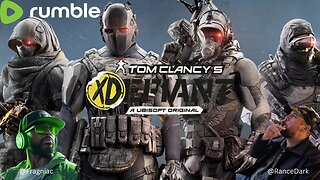 LIVE
LIVE
Rance's Gaming Corner
5 hours agoTime for some RUMBLE FPS!! Get in here.. w/Fragniac
1,776 watching -
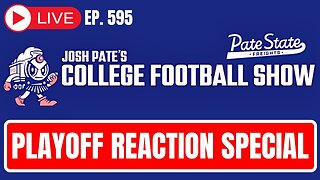 LIVE
LIVE
Josh Pate's College Football Show
5 hours agoCFP Reaction Special | Early Quarterfinal Thoughts | Transfer Portal Intel | Fixing The Playoff
396 watching -
 23:55
23:55
CartierFamily
2 days agoElon & Vivek TRIGGER Congress as DOGE SHUTS DOWN Government
46.1K71 -
 5:43:44
5:43:44
Scammer Payback
2 days agoCalling Scammers Live
136K21 -
 18:38
18:38
VSiNLive
2 days agoProfessional Gambler Steve Fezzik LOVES this UNDERVALUED Point Spread!
99.8K17 -
 LIVE
LIVE
Right Side Broadcasting Network
10 days agoLIVE REPLAY: President Donald J. Trump Keynotes TPUSA’s AmFest 2024 Conference - 12/22/24
5,392 watching -
 4:31
4:31
CoachTY
23 hours ago $24.08 earnedCOINBASE AND DESCI !!!!
130K10 -
 10:02
10:02
MichaelBisping
22 hours agoBISPING: "Was FURY ROBBED?!" | Oleksandr Usyk vs Tyson Fury 2 INSTANT REACTION
67K13 -
 8:08
8:08
Guns & Gadgets 2nd Amendment News
2 days ago16 States Join Forces To Sue Firearm Manufacturers Out of Business - 1st Target = GLOCK
97.5K86 -
 10:17
10:17
Dermatologist Dr. Dustin Portela
2 days ago $17.70 earnedOlay Cleansing Melts: Dermatologist's Honest Review
137K14
